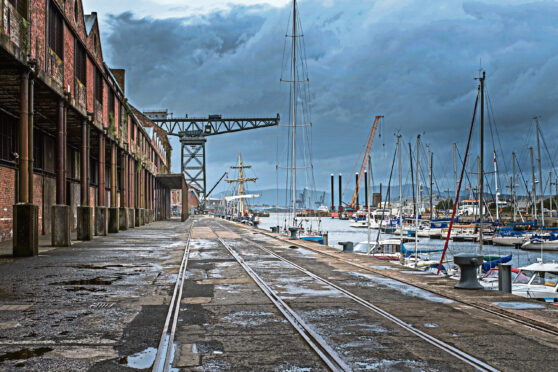
A national human rights museum and cultural quarter could breathe life into some of Scotland’s poorest postcodes, according to proposal documents.
The team behind the blueprints hope the museum, which would detail and explain the country’s historic links with the slave trade, could be located in Inverclyde and revitalise the area, echoing how the V&A has bolstered Dundee’s regeneration.
The case for a museum to address links with slavery was laid out in a motion entitled Showing Solidarity with Anti-Racism at Holyrood last June.
A campaign group, consisting of politicians, academics and business figures, will this week submit a detailed case to the Scottish Government for establishing the museum near central Greenock, which last year ranked at the top of the Scottish deprivation index.
The town’s Grade A listed sugar sheds or a local tobacco warehouse have been identified as possible locations for the project, which is being modelled on a similar museum in Winnipeg, Canada.
Large numbers of slaves were moved from Africa to work on sugar plantations in the West Indies, as the industry, which brought great wealth to parts of Britain, evolved in the 17th and 18th Centuries.
Setting out their case, the campaign group state: “Media coverage following the death of George Floyd and the Black Lives Matters movement highlighted a lack of knowledge across Scotland of our links to the horrors of our past. The motion passed by parliament clearly demonstrated will for a national museum to tell the history of Scotland’s role in slavery and colonialism. This may be best served through a National Human Rights Museum as opposed to a National Museum of Slavery.”
Stuart McMillan, Inverclyde SNP MSP, who is part of the group, said in addition to the slave trade, the museum should also mark the Highland Clearances and Scotland’s role in extending the empire, as well as global events with which Scotland has had a positive involvement, such as fighting Nazi fascism and the Balkan conflict.
He said: “The museum would help educate local people about our history and be a centre for people to learn about Scotland’s past and how we can use it to help shape a more positive future.
“A Creative Quarter based in Greenock town centre utilising a historic tobacco warehouse and surrounding space would also be an excellent location.
“Dundee has benefitted from the V&A Museum and we believe a landmark project in Inverclyde could give a huge lift to the area.”
Greenock became the main Scottish port for imports of sugar and tobacco in the 1800s while Port Glasgow was the leading port for journeys to West Africa from Scotland in the 1700s.
Louise Hunter of backers Creative Inverclyde, said: “Given that Greenock was second only to London in terms of the sugar trade, it makes sense for a national museum to be developed in the area where the ships were built and the sugar was brought into port.”
Campaign group member Elliott McKelvie, of the Clyde Atlantic Trust, added the plans could include using a section of the sugar sheds for a museum focusing on the River Clyde.
He said: “There is no marine, military or heritage project in Scotland that includes any meaningful reference to the importance of the river and the industrial ports which defined it.”
The Scottish Government said last week: “We have sponsored an independent group chaired by Sir Geoffrey Palmer, which includes Museums Galleries Scotland, to identify ways we can re-interpret aspects of our hidden or contested heritage to present a more accurate, complete picture of the past.”

Enjoy the convenience of having The Sunday Post delivered as a digital ePaper straight to your smartphone, tablet or computer.
Subscribe for only £5.49 a month and enjoy all the benefits of the printed paper as a digital replica.
Subscribe